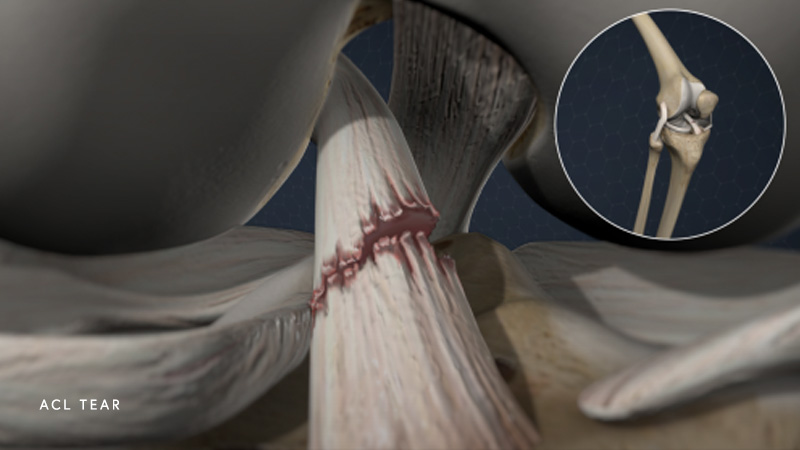ACL Tear
The Anterior Cruciate Ligament (ACL) is considered one of the most important ligaments for stability of the knee, and probably the best-known knee injury. ACL tears most commonly occur during athletic activity but can happen any time there is a sudden stop or change in direction of the knee. Keep reading to learn what should you know.
When going to the Orthopaedic office, the first thing a good physician will do is take a history to learn how the injury occurred, and what are the usual activities and demands on the knee.
Then, as able, a physical examination of both knees is performed. The injured knee will be checked for tenderness and swelling in comparison to the uninjured knee. There are a variety of tests that can be performed, if someone is comfortable enough, to determine the extent of injury. These include range of motion measurements, strength testing, and maneuvers to assess the status of the major ligaments.
X-Rays
High quality, Orthopaedic X-Ray views of the knee are usually needed, and done at the initial office visit to evaluate for fractures and other bone abnormalities.
MRI
In general, if a severe injury is suspected, a high-quality MRI is appropriate, and the MD will order one, which usually requires insurance approval.
MRI stands for Magnetic Resonance Imaging and is a very large magnet with a sophisticated computer and software, that will generate images of the soft tissues, including ligaments, joint cartilage, meniscus cartilage, and subtle details of the bone. For this reason, MRI is the most common imaging test after X-Ray.
CT scans, and ultrasound have a limited value in evaluating an acutely injured knee.
Any acutely injured knee will require basic treatment to reduce swelling and pain and regain range of motion. The best-known mnemonic for initial treatment is:
RICE
As soon as possible, the injured knee should be treated with:
- Rest – Relative rest is necessary until the knee recovers, this usually involves no athletic activity, and limited weight bearing on the knee, often with crutches.
- Ice – Ice the knee frequently, but never directly on the skin, and no more than 15 minutes on followed by at least 15 off. This reduces pain and helps minimize swelling and bleeding into the knee.
- Compression – A compression knee sleeve or wrap will help minimize bleeding and promote the body’s resorption of fluid from the knee.
- Elevation – Raising the affected area, ideally above the level of the heart, helps reduce swelling.
Definitive Treatment
At the Center for Orthopaedic Specialists, our physicians will review the options for treatment of an ACL tear, and tailor treatment based on the extent of injury, and patient needs and athletic demands. In general, the goal for everyone is a knee that is stable enough to return to normal activities. This can sometimes be accomplished by activity modification, with or without bracing. Most healthy, physically active individuals, however, will chose surgery.
Surgery
ACL Reconstruction has advanced greatly from the early days when large incisions were needed. With the advances in arthroscopic techniques, a skilled arthroscopic surgeon can reconstruct the ligament, and treat any other associated injuries with minimal, arthroscopic incisions, as an outpatient. During surgery, the ruptured ligament is removed and replaced with a suitable substitute tendon. This can be obtained from the patient, (autograft), or more commonly these days, from a donor (allograft).
Rehabilitation
Initially, your doctor will recommend physical therapy, and exercises, that will be done under direct supervision at first. As you progress, you will be able to do much of the exercises at home and in a gym setting, with guidance, and ultimately independently. Crutches are usually used for a short time, until adequate muscle strength returns to the knee.
Consult With A Professional
The physicians at Center for Orthopaedic Specialists have been treating patients who have ACL tears with state-of-the-art treatment since the first arthroscopic ACL surgeries. They have the expertise and understanding to guide you and treat your injuries so that you can return to an active lifestyle. If you are currently experiencing any symptoms of an ACL tear, or require treatment, contact the Center for Orthopaedic Specialists today!



 / 50 Reviews
/ 50 Reviews